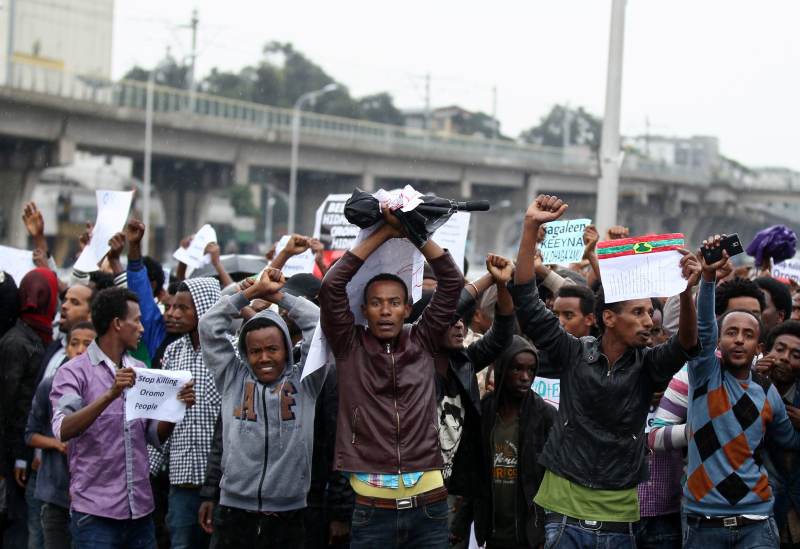By Michael Taylor, Director of the International Land Coalition (ILC)
When world leaders adopted the SDGs in September 2015, they took a bold step in recognising the reality that ‘sustainable development’ is complex and multifaceted. While many criticised the explosion of targets and indicators compared to the slimmed-down MDGs, supporters pointed to a common agenda whose breadth does a better job at encompassing the reality of what it will take to positively transform human well-being and environmental sustainability.
Land rights are emblematic of this shift. While land – and indeed agricultural production – were absent in the MDGs, land rights feature in the SDGs under goals 1, 2 and 5. And rightly so, if we really want to achieve long-lasting change, then we can’t ignore people’s relationship to land and natural resources.
So, a great step forward in terms of recognition, but the land-rights community that banded together in the lead-up to the SDGs to promote this shift cannot rest on its laurels. The challenge that lies ahead is enormous.
The Global Call to Action, a campaign currently backed by over 500 organisations from around the world, estimates that 2.5 billion people live on and use land on which they have no secure legal rights. Much of this land is used by communities and claimed through customary means. In fact, such claims by local communities and Indigenous Peoples cover 65 per cent of the surface of the Earth. Yet, only 10 per cent of these claims are actually recognised by their governments. This massive gap is an illustration both of the scale of precariousness and vulnerability that exists due to insecure land rights, but also of the extent to hich transformation would be possible if governments seriously worked towards land targets in the SDGs.
How optimistic can we be? As a start – and not to be underestimated – is the normative change that these targets signal. If all men and women, in particular the poor and the vulnerable, have … access to ownership and control over land becomes a standard and accepted goal across different countries, this would already mean a strong paradigmatic shift. However, equity in ownership and control over land and its natural resources strikes to the heart of political and economic power. Making this real means tackling the powerful individuals and corporations that have created – and benefit from – inequality in the first place. This is, of course, no easy task.
So, how will we do it? A key success factor will be in our ability to give substance to what the targets actually mean in practice. Perhaps the only bigger risk than maintaining the status quo on land rights, is doing it wrong. Doing it badly could concretise dispossession and further increase inequality. Succinct targets give space for both the yay- and nay-sayers to fill in the details, and so the ball is in our court to say for ourselves what we think those targets should mean if they are to be transformational.
ILC members have taken the broad concept of ‘responsible land governance’ as covered by the Voluntary guidelines for responsible governance of tenure of land, fisheries and forests, agreed by all members of the Committee for World Food Security, and defined what needs focused attention if land governance is going to serve the needs of those who live on the land. This is what our members call ‘people-centred land governance’. For example, under Sub-goal 1.4, our members would point to ‘men and women’ refers not just to individuals, or even households, but also to ‘communities’, recognising the collective aspect of land ownership, access, use and management of various kinds of land and natural resources. They would also emphasise that ‘ownership and control’ may be important forms of tenure, but not the only ones. You get the picture.
Even more so, tracking progress towards the goals will have a considerable impact on where efforts will be concentrated. Due to the lack of data on land governance in general, the risk is that priorities – as expressed in indicators – are framed by the availability of data rather than what will actually make the difference. For those of us working in the land sector, this presents an opportunity to clearly define the change we would like to measure, and then push the data and evidence base forward – most particularly through efforts to collect citizen-led data, on which a number of our members are already starting very interesting work.
There is no doubt that the historic inclusion of land rights into the global development agenda marks a new era. The signal of shifting norms is itself a significant hook that grants legitimacy to the voices calling for change, especially those of land users themselves. An immediate challenge in moving from aspiration to genuine transformation is how effectively and persuasively we fill in that next layer of information, elaborating on what we actually need to do to reach the targets. Our members are already starting to do this. Together, we may have a chance of mobilising around the SDGs to make a significant shift on land rights around the world.
The International Land Coalition www.landcoalition.org was founded in 1995. It is a global alliance of 206 civil society and intergovernmental organisations working together “to put people at the centre of land governance”. The Secretariat is hosted by the International Fund for Agricultural Development (IFAD) in Rome.

